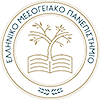Focusing the IPPL ultra-powerful laser beam on solid or gaseous targets under high vacuum protons / ions and electrons are accelerated creating active particle beams which are utilized in various fields of research and applications. The study of their application in biomedicine is particularly important, while there are many technological applications, such as the irradiation of electronic components used in space technology to study their behavior at radiation doses. In addition, under suitable conditions, the interaction of strong ultrashort laser pulses with a target gas can lead either to the creation of a multiple frequency light of the laser beam, or to the production of betatron photon radiation, which is a field of cutting-edge research and innovative applications such as high spatio-temporal imaging of the structure of matter, developed at the Institute. Systematic research is carried out in the IPPL on the dynamic evolution of strong laser pulses interacting with solid targets, studying all its stages, from the initial solid state of matter to the plasma state. This research is an important issue in the framework of the international efforts to produce energy from fusion with powerful laser beams, where the development of plasma instabilities limits energy efficiency. IPPL participates for this purpose in the HiPER and Eurofusion research networks.
Implementation
-
Ultrahigh intensity laser – matter/plasma physics and technology
-
High energy particle acceleration and plasma transport
-
X-ray and γ-ray sources
-
Ultrahigh magnetic field generation
-
Applications of secondary sources in material and biomedical sciences
-
-
Laser probing plasma diagnosis
-
Laser target diagnostics
-
Laser shadowgraphy
-
Laser schliering imaging
-
Laser interferometric methods
- Gas jet laser characterization
-
Plasma spectroscopy
-
Plasma radiography
-
